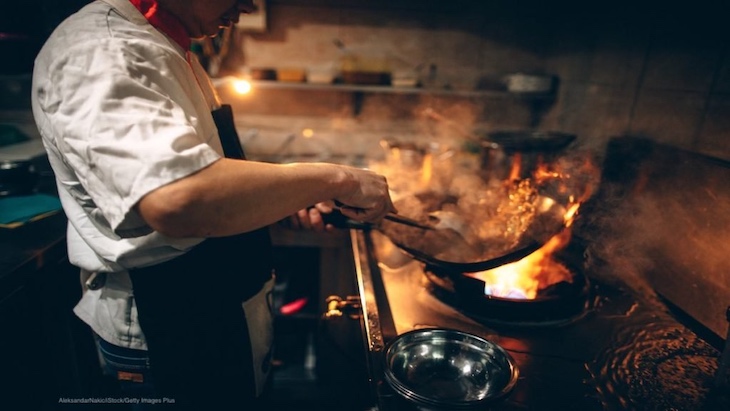The USDA is offering ten tips to keep restaurant leftovers safe when you take them home. Now that the COVID-19 pandemic is easing, more people are going out to eat. But how you handle doggie bags can have an impact on your health.

Firsts of all, if you are having dinner before going to a movie or shopping, do not take leftovers. Perishable food needs to be refrigerated within two hours after it comes out of the oven or fridge. Since it probably took you about an hour to eat, you don’t have much time to refrigerate the food.
Second, bring the food directly home. The faster you get it into the fridge, the lower the chance that bacteria will grow.
Third, you can refrigerate meat and poultry leftovers at 40°F or below for four days. Eggs and lunch meats can be stored in the fridge up to five days.
Fourth, you can use the freezer to store leftovers. Cooked meat and poultry can be put into sealed containers and frozen at 0°F or lower for two to six months.
Fifth, reheat meat and poultry items in the oven at a temperature no less than 325°F. Soups, gravies, and sauces should be reheated to a full rolling boil.
Sixth, don’t reheat food in the slow cooker because foods sit too long in the danger zone of 40°F to 140°F where bacteria grow rapidly; in fact, pathogens double in number in that temperature range.
Seventh, when reheating in the microwave oven, put the food on a microwave safe plate or in a microwave safe bowl. Food items should be spread evenly. Stir them halfway during heating to avoid cold spots where bacteria could survive.
Eighth, always reheat leftovers to 165°F and check that temperature with a reliable and accurate food thermometer.
Ninth, if you don’t’ eat all of the reheated leftovers in one sitting, refrigerate what’s left immediately. You can reheat refrigerated reheated leftovers safely as long as the food reaches 165°F each time it’s reheated.
And tenth, never taste food to try to determine its safety. You can’t see, smell, or taste pathogens and they do not change the texture or characteristics of the food.
Now that you know how to keep restaurant leftovers safe, you can protect yourself. And enjoy eating out again!





Thank you for the info on food leftovers.